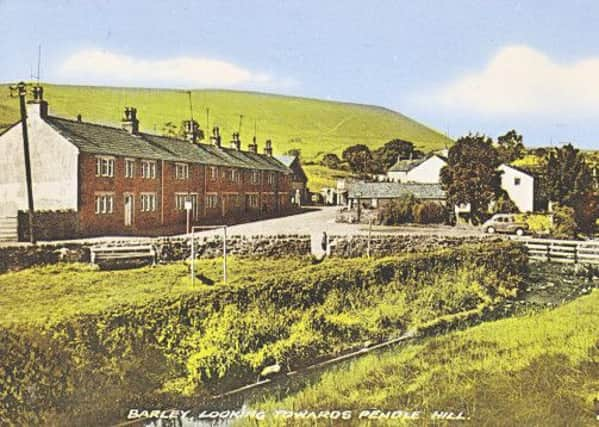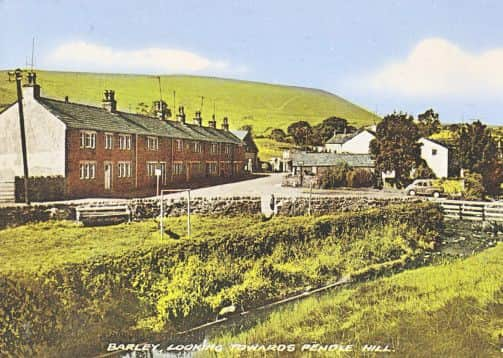The villages of Barley and Roughlee on our doorstep


The villages are, in terms of their location and attractive qualities, within the Forest of Bowland Area of Natural Beauty but, as you will know, they are not actually in Bowland itself. Both Barley and Roughlee are, historically, part of the Forest of Pendle which, though separated from Bowland by the Ribble Valley, have been attached to it as part of the AONB.
To my mind the Forest of Pendle should be designated an AONB in its own right – perhaps not all of the historic forest but certainly the area from Padiham Heights to Wycoller and, if that was the case, the equally impressive Forest of Trawden would be included.
Advertisement
Hide AdAdvertisement
Hide AdThough very attractive on all sorts of levels, the Forest of Bowland is not visited as often as is Pendle. This might have something to do with Pendle’s famous hill and events associated with the Lancashire (or Pendle) Witches. It could also be because Bowland is very remote and lacks the visitor facilities that are increasingly offered by Pendle. In fact, it might be argued Bowland’s remoteness constitutes one of its greatest strengths but Pendle manages to preserve its often gritty beauty even though it is close to the realities of manufacturing industry located in the towns of Burnley, Nelson and Colne.


When in Barley or Roughlee, although both villages are only a short drive from Burnley, it is difficult to believe, so different are one’s surroundings, that the town now famous for its football club, and little else, but formerly one of the great centres of the industrial revolution, is so near.
The villages, neither of which has a church, share the same valley though the stream which passes through it is known by several different names. In Barley the stream is called Barley Water, which reminds me of interminable health drinks when I was younger. Thank goodness someone thought of adding lemon to “barley water!”
Below Barley the stream, now joined by the Ogden Clough, becomes White Hough Water before, after a short stretch as Roughlee Water, it emerges as Pendle Water on the other side of Roughlee. Under this name it remains until it joins the Lancashire Calder near Royle Road, Burnley. Mind you, there are people in the Pendle area who still refer to Pendle Water as the Calder and there are several names in Barrowford which remind us of this, a dispute about nomenclature which goes back to the 16th Century, if not before.
Advertisement
Hide AdAdvertisement
Hide AdBarley is a pretty little village with a huge but not ancient village green adapted for the use of visitors as well as locals. The village has the Pendle Inn, a former Massey House and clearly built by that brewery in the 1920s. There are two great little tea rooms, one in a delightful little cottage on the main street and another in a more modern building on the village car park.
There is also the Barley Mow which, when I was there last, was undergoing renovation. I liked the old Barley Mow but won’t object if its replacement is as good as the recently re-opened Bay Horse in Roughlee.
Barley is the starting, and finishing point, for numerous walks in the surrounding countryside. Fortunately, there are paths aplenty though there is one I have no intention of walking again, the one that lead me once to the top of Pendle! My visits to that fantastic vantage point will be restricted to less arduous campaigns from the Nick of Pendle.
Of course Pendle is well known because of the visit of George Fox in 1650. It was there the founder of the Society of Friends, otherwise known as Quakers, had a vision which determined him to carry on his work, the effects of which are still being felt worldwide today.
Advertisement
Hide AdAdvertisement
Hide AdBack in the village of Barley, there is plenty to see – the eco-friendly village hall which adds so much to the community; the little Methodist chapel; the cottages, particularly those of Narrowgates where the last of the village mills still survives though now it is converted into residential accommodation.
Barley to me is the village which once had the private little Barley Omnibus Company whose charming buses plied the country lanes until the firm was bought out, at least in part, in 1945 by the big boys of the municipally owned Burnley, Colne and Nelson Joint Transport. The large, but not obtrusive, garage in the village is a reminder of the early days of rural bus transport.
If we now pass, via the most attractive White Hough, a hamlet of lovely stone built houses and cottages (but famous for its White Hough Education Centre), to Roughlee, we come to another charming community. Roughlee – the place name means simply a “clearing in the woodland” – was once a hive of activity.
Right in the centre of the village there was a large textile mill the pond of which, and the land around, when the mill closed, was converted into the most attractive of pleasure grounds. The pond became a very popular boating lake and is still enjoyed by visitors and fishermen alike.
Advertisement
Hide AdAdvertisement
Hide AdThere were lots of these places by the middle of the 19th Century. There was one at Happy Valley, at the crossroads between Barley and Roughlee. It was little more than a tea room with some outside dining space, and the odd swing for the children, but it was a charming place and is remembered fondly by lots of us more senior walkers with great affection.
Not too far away are the similar establishments at Noggarth Cottage and at the now unique Clarion. The latter is on the lane between Happy Valley and Newchurch in Pendle and is the last of its kind in the country still providing its original service, hot cups of tea for cyclists and walkers, though its Socialist beginnings are not now pushed as much as they once were. Pendle would not be the same place if something untoward happened to the Clarion.
However, Roughlee is the home of Roughlee Old Hall which is still associated with the tragic figure of Dame Alice Nutter, one of the Lancashire Witches of 1612. It is thought now that Alice did not live there but at another farm nearby, but the Old Hall still gets more than its fair share of visitors.
Now let us have a more considered look at Barley and Roughlee and let me recommend you get out there and enjoy their charms.